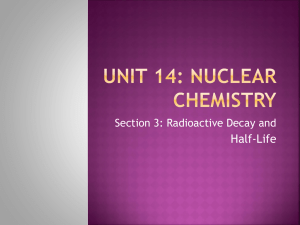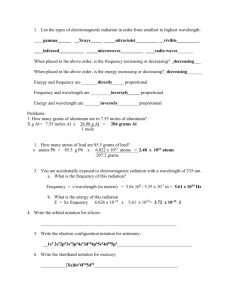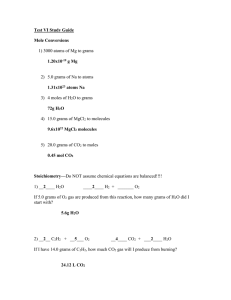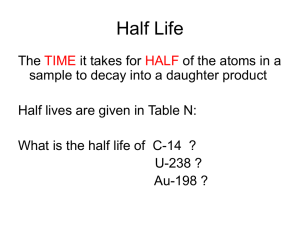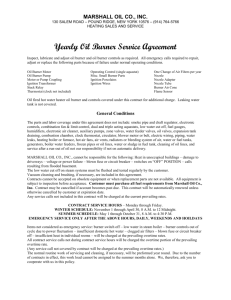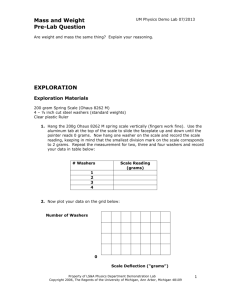CalcWSAP62_63
advertisement
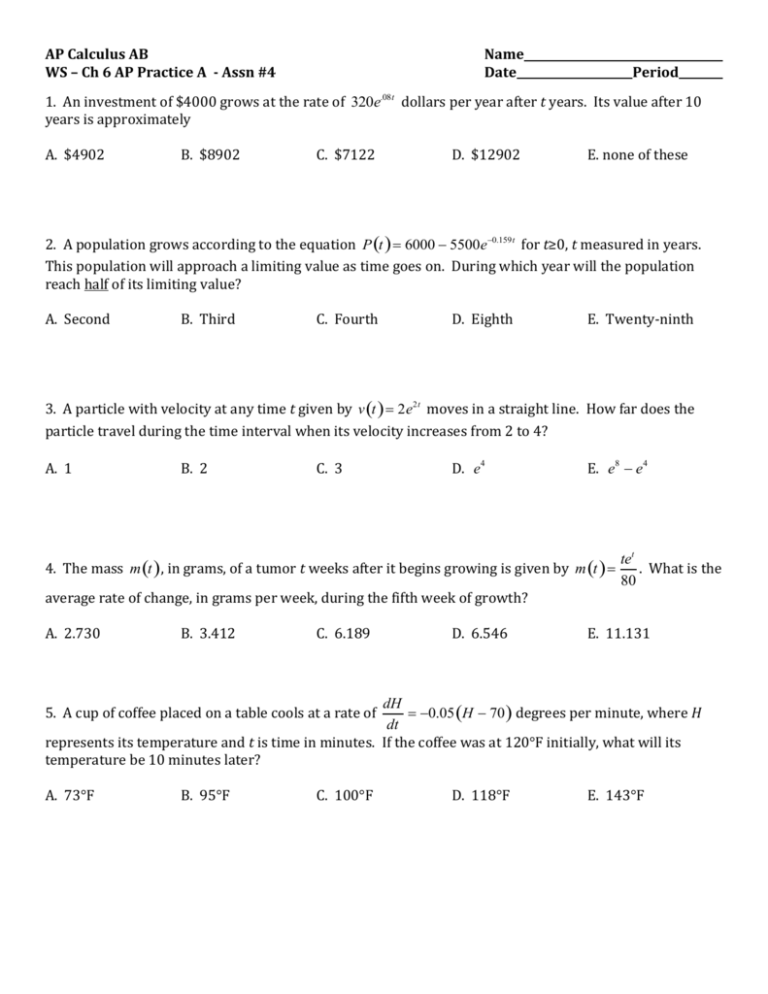
AP Calculus AB WS – Ch 6 AP Practice A - Assn #4 Name Date Period 1. An investment of $4000 grows at the rate of 320e.08t dollars per year after t years. Its value after 10 years is approximately A. $4902 B. $8902 C. $7122 D. $12902 E. none of these 2. A population grows according to the equation P t 6000 5500e0.159t for t≥0, t measured in years. This population will approach a limiting value as time goes on. During which year will the population reach half of its limiting value? A. Second B. Third C. Fourth D. Eighth E. Twenty-ninth 3. A particle with velocity at any time t given by v t 2e2t moves in a straight line. How far does the particle travel during the time interval when its velocity increases from 2 to 4? A. 1 B. 2 C. 3 D. e4 E. e8 e4 4. The mass m t , in grams, of a tumor t weeks after it begins growing is given by m t tet . What is the 80 average rate of change, in grams per week, during the fifth week of growth? A. 2.730 B. 3.412 C. 6.189 D. 6.546 E. 11.131 dH 0.05 H 70 degrees per minute, where H dt represents its temperature and t is time in minutes. If the coffee was at 120°F initially, what will its temperature be 10 minutes later? 5. A cup of coffee placed on a table cools at a rate of A. 73°F B. 95°F C. 100°F D. 118°F E. 143°F 6. The rate of decay of a radioactive substance is proportional to the amount of substance present. Four years ago, there were 12 grams of substance. Now there are 8 grams. How many grams will there be 8 years from now? A. 0 B. 8 3 C. 32 9 D. 81 16 E. 16 3 7. Find the distance traveled (to three decimal places) in the first four seconds, for a particle whose 2 velocity is given by v t 7et ; where t stands for time. A. 0.976 B. 6.204 C. 6.359 D. 12.720 E. 7.000 8. The rate at which an object cools is directly proportional to the difference between its temperature (in Kelvins) at that time and the surrounding temperature (in Kelvins). If an object is initially at 35K, and the surrounding temperature remains constant at 10K, it takes 5 minutes for the object to cool to 25K. How long will it take for the object to cool to 20k? A. 6.6 min B. 7.50 min C. 7.52 min D. 8.97 min E. 10.00 min 9. At any time t ≥ 0, in days, the rate of growth of a bacteria population is given by y ' ky , where y is the number of bacteria present and k is a constant. The initial population is 1500 and the population is quadrupled during the first 2 days. By what factor will the population have increased during the first 3 days? A. 4 B. 5 C. 6 D. 8 E. 10 10. Find the time (in years) necessary for $1000 to double if it is invested at 7% compounded continuously. Round your answer to two decimal places. A. 1.19 years B. 10.24 years C. 9.90 years D. 9.93 years E. 0.99 year 11. The amount of radiation R t in a certain liquid decreases at a rate proportional to the amount dR kR, where k is a constant and t is measured in seconds. The initial amount of present, that is dt radiation is 106 rads. After 100 seconds the radiation has dropped to 102 rads. a. Express R as a function of t. (Show the calculus necessary to support your answer.) b. To the nearest seconds, when will the amount of radiation drop below 10 rads? c. What is the half-life of this chemical? That is, how long does it take for the amount of radiation to reach half of the original amount? dT 0.03T models the temperature, T, above room temperature, of dt an electric burner. T is measured in degrees Fahrenheit (°F) and t ≥ 0 is in seconds. a. Find the general solution of the differential equation in terms of a constant k. 12. The differential equation 42 3 b. When the burner is first turned on, T 0F . Use this fact to find the value of the constant k. c. The safety standards board has determined that this type of burner is unsafe its temperature can exceed 1500°F. Is this burner safe or unsafe? Justify your answer.
